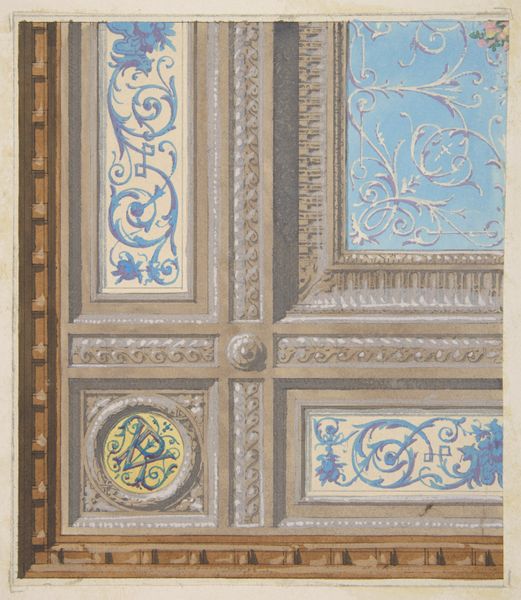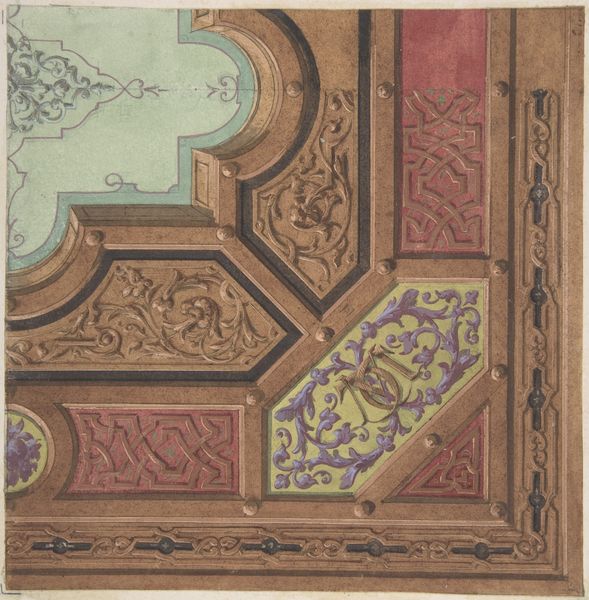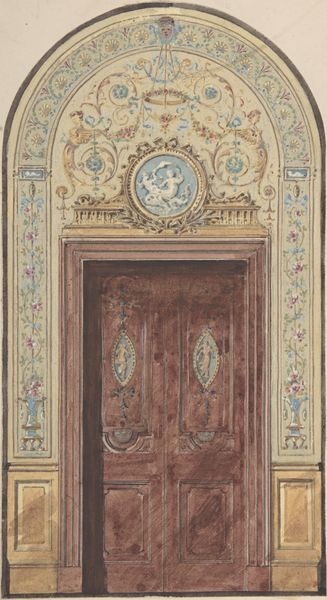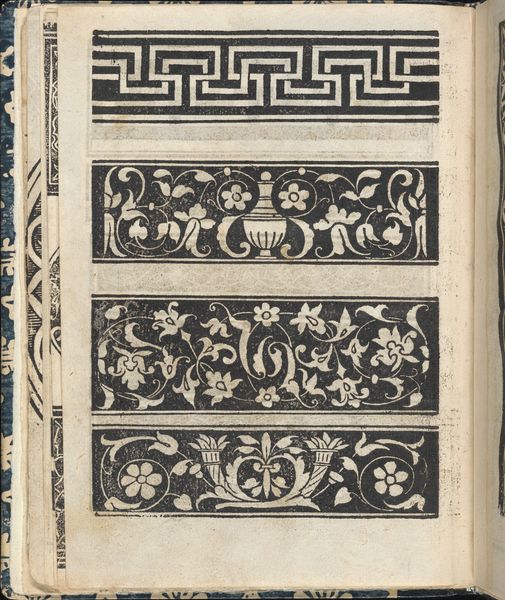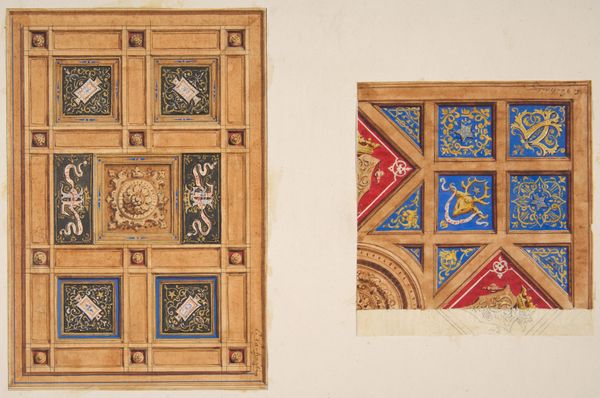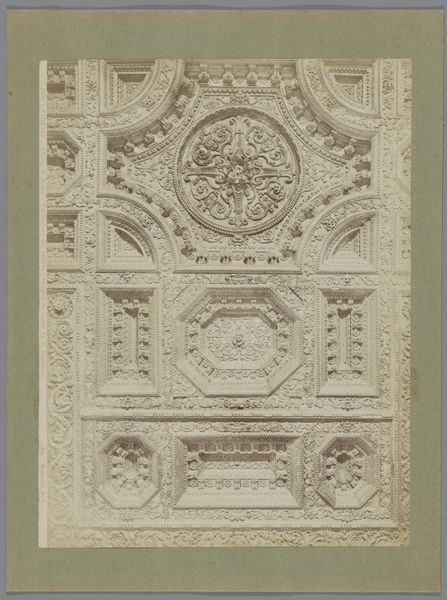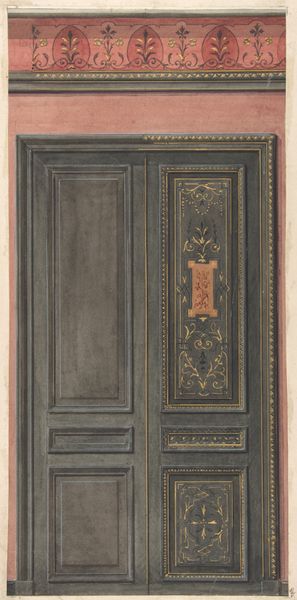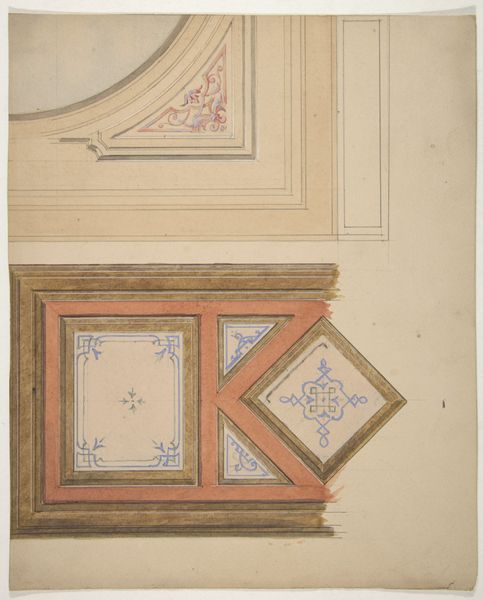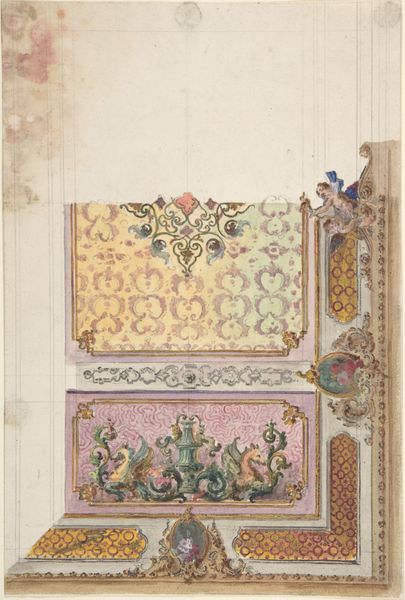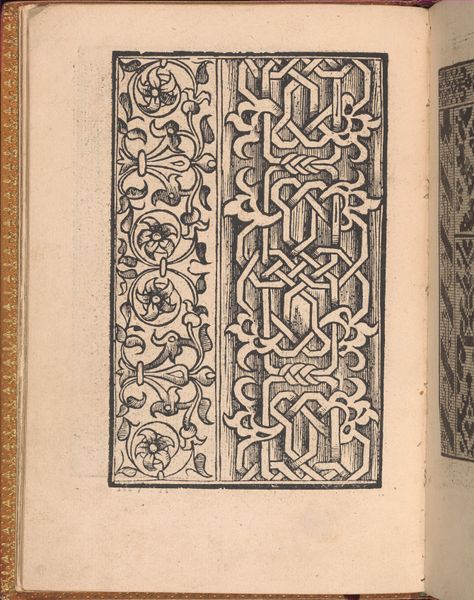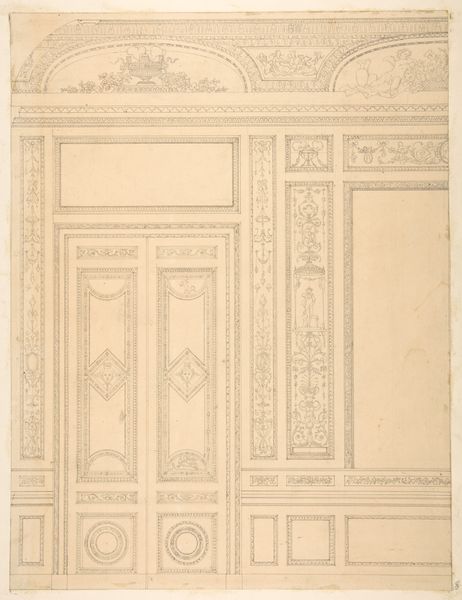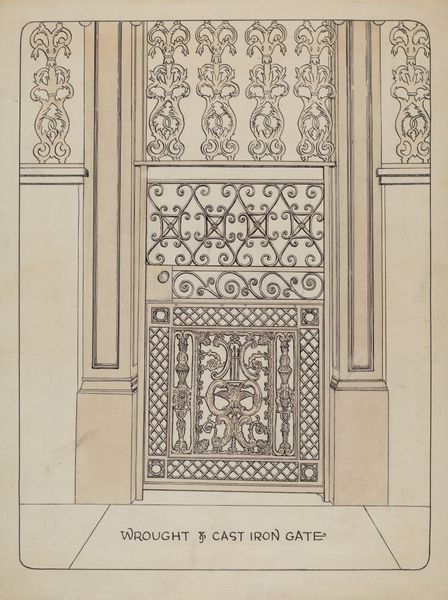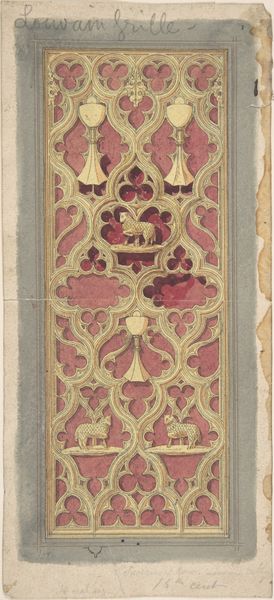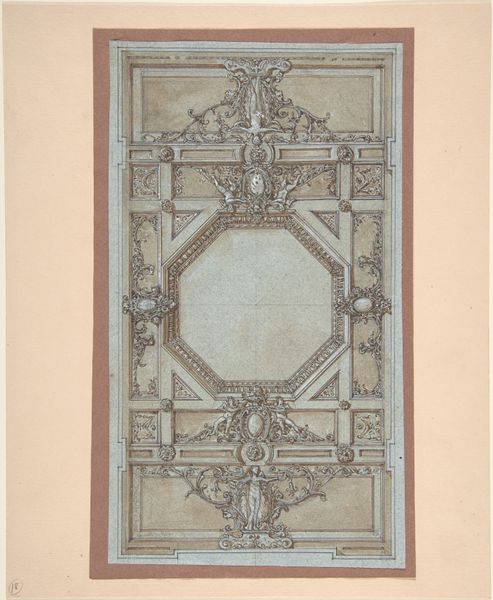
Design for the painted decoration of a coffered ceiling with initials: VR 1830 - 1897
0:00
0:00
Dimensions: sheet: 6 9/16 x 5 7/16 in. (16.7 x 13.8 cm)
Copyright: Public Domain
Curator: I'm immediately drawn to the meticulous detail – look at this, what would later become an abandoned fragment. I'm noticing brown washes interspersed with orange, violet, blue. Editor: It’s a watercolor drawing, "Design for the painted decoration of a coffered ceiling with initials: VR", placing it somewhere between 1830 and 1897, conceived by Jules-Edmond-Charles Lachaise. The rigid geometry, of course, roots it firmly in Neoclassical tradition. Curator: But it transcends mere geometry. It's an echo of grand spaces, royal aspirations even. That monogram, the floral scrolls... it’s dripping with symbolic weight. Who were these initials meant for? What narratives did the client hope to embody? The room these renderings were meant for was likely for someone of significance and not merely aesthetic or practical. Editor: Let's not get lost in the romanticism just yet. It’s easy to imagine lavish ceilings when we look at this drawing, but there’s something else happening. Lachaise, as a maker, demonstrates incredible technical mastery. Consider the labor that went into rendering all of these subtle details using watercolours—the laying of each plane, color choice and rendering shadows. It wasn’t as simple as selecting a color but making each section by hand. The hand’s engagement becomes meaningful. Curator: True, the craftsmanship is undeniable, it would not be easy to make this, especially considering the timeframe, even just rendering floral filigree and the color matching would take some labor. However, all those precisely rendered acanthus leaves, that VR monogram— they’re more than mere decoration. Those choices speak of an era, the cultural identity, which the room's client looked to associate themselves with. We would not see anything like it today as even the materials have evolved from handmade. Editor: You see emblems of cultural aspirations, I see the hours— likely grueling — poured into making an elite decorative commodity, and the historical context in which this piece of ephemera existed. It forces us to rethink what defines something of material worth and aesthetic, beyond pure status signifiers. What if it's just decorative or even banal? We cannot expect people to simply accept something from their current context, after all, isn’t there cultural worth as well as monetary? Curator: An interesting thought— though I struggle to see something like this in plain economic value— to suggest that there isn’t something culturally rich here is disingenuous. It feels more impactful because we are viewing it not just in an artistic vacuum but seeing both intent and construction together. It makes it feel grander— or sadder as it did not succeed past planning. Editor: Precisely. It challenges us to reconcile these views.
Comments
No comments
Be the first to comment and join the conversation on the ultimate creative platform.
